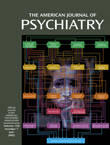On Freud’s “Group Psychology and the Analysis of the Ego,”
As psychoanalysis is primarily a discipline and science centering on the pathology and treatment of the individual, it is little wonder that Freud’s classic paper on group psychology is seldom included in the core curriculum of psychoanalytic institutes. Even today Freud’s essay on group psychology continues to draw mixed reviews. Modern-day dynamically trained mental health practitioners view it as a classic contribution, but many psychoanalysts see it as an inferior work or, at best, as a sidebar to analysis. Thus, it is surprising that the International Psychoanalytical Association Publications Committee selected it to be the springboard for the International Psychoanalytical Association Monograph Series.
This work is edited by Ethel Spector Person and consists of two parts. In her succinct introduction, Person provides a roadmap of the contributions to follow. In part 1 of the book, titled “Group Psychology and the Analysis of the Ego” (1921): The Text, John Kerr performs a scholarly exegesis of some excerpts. Among Kerr’s key contributions are his analysis of and reservations regarding the way Freud explained the phenomena of contagion and gregariousness in crowds and mobs observed by earlier writers and his discourse on the “group” leader as the father of the primal hoard rather than as the oedipal father of childhood. It bears mentioning that when he used the German term Massenpsychologie, Freud was addressing the psychology of crowds and large organizations rather than the small treatment groups with which most mental health professionals are familiar.
Part 2, Discussion of “Group Psychology and the Analysis of the Ego,” consists of seven chapters. Analytic scholars and clinicians from the United States, Latin America, Europe, and Israel contribute chapters titled “Background, Significance and Influence,” “Group Psychology and the Psychoanalytic Group,” “Power and Leadership in Complex Organizations,” “Groups and Fanaticism,” “Psychoanalytic Family Trees,” “Group Psychology, Society, and Masses: Working With the Victims of Social Violence,” and “Group Psychology, Psychoanalysis, and Culture.”
All of these chapters are laudatory, but probably the most appealing and pragmatic to the social science and psychiatric communities are Anzieu’s “Background, Significance and Influence,” Zaleznik’s “Power and Leadership in Complex Organizations,” and Eizirik’s “Group Psychology, Psychoanalysis, and Culture.” Anzieu’s chapter, completed shortly before his death, offers an enlightening sociohistorical context of the circumstances during which Freud wrote “Group Psychology and the Analysis of the Ego.” In lucid fashion, Anzieu provides a synopsis of the 12 chapters of Freud’s work and highlights the key features. He follows this with a brief description of the pioneering contributions of several English analysts such as W.R. Bion, S.H. Foulkes, and H. Erziel, all of whom helped to describe some of the powerful and unconscious forces operative in therapeutic groups.
Zaleznik, an authority on organizational issues, brings up many contentious questions that social scientists have raised about the veracity of some basic tenants in Freud’s essay. For example, did Freud overgeneralize in distinguishing between primary and artificial groups by referring only to a study of the Church and to the Army? Did Freud overlook or ignore the importance of designated authority and allied roles in complex organizations when he employed the myth of the primal horde as a major pillar in his group psychology? In the most current chapter of this book, Zaleznik, a certified analyst with the Harvard University Graduate School of Business, provides informative illustrations of the dynamics in the execution of power and authority in companies and their subsequent consequences.
In the final chapter, Eizirik relates Freud’s essay on group psychology to other seminal works, devotes a paragraph to each of Freud’s 12 chapters that selects what he sees as germane contributions to the understanding of mass psychology, and summarizes a few pertinent studies on mass psychology and on organizational and group dynamics stimulated by Freud’s essay. By viewing psychoanalysis as an artificially structured group, Eizirik claims that the loss of the illusory power of psychoanalysis, a cardinal property of most large groups, can be explained by modern-day demands of rigorous verification and outcome studies.
This monograph deserves a place in the library of those interested in organizational dynamics and large groups and places in proper perspective Freud’s contribution to group psychology. Although it will probably not earn a place in the core curriculum of psychoanalytic institutes, many group psychotherapists may wish to own this text to improve their understanding of what Freud had in mind when he described the dynamics of crowds and large groups.



